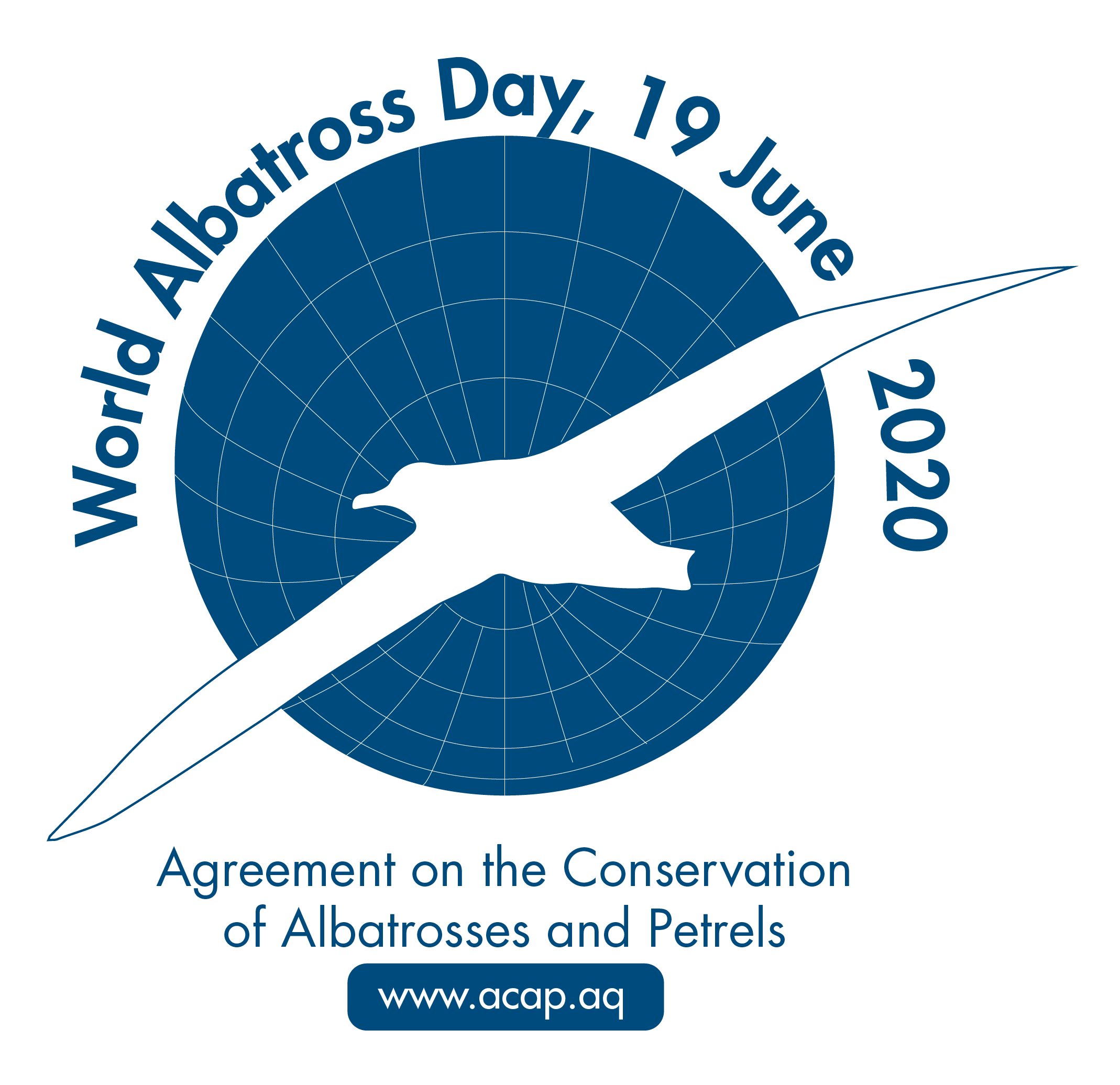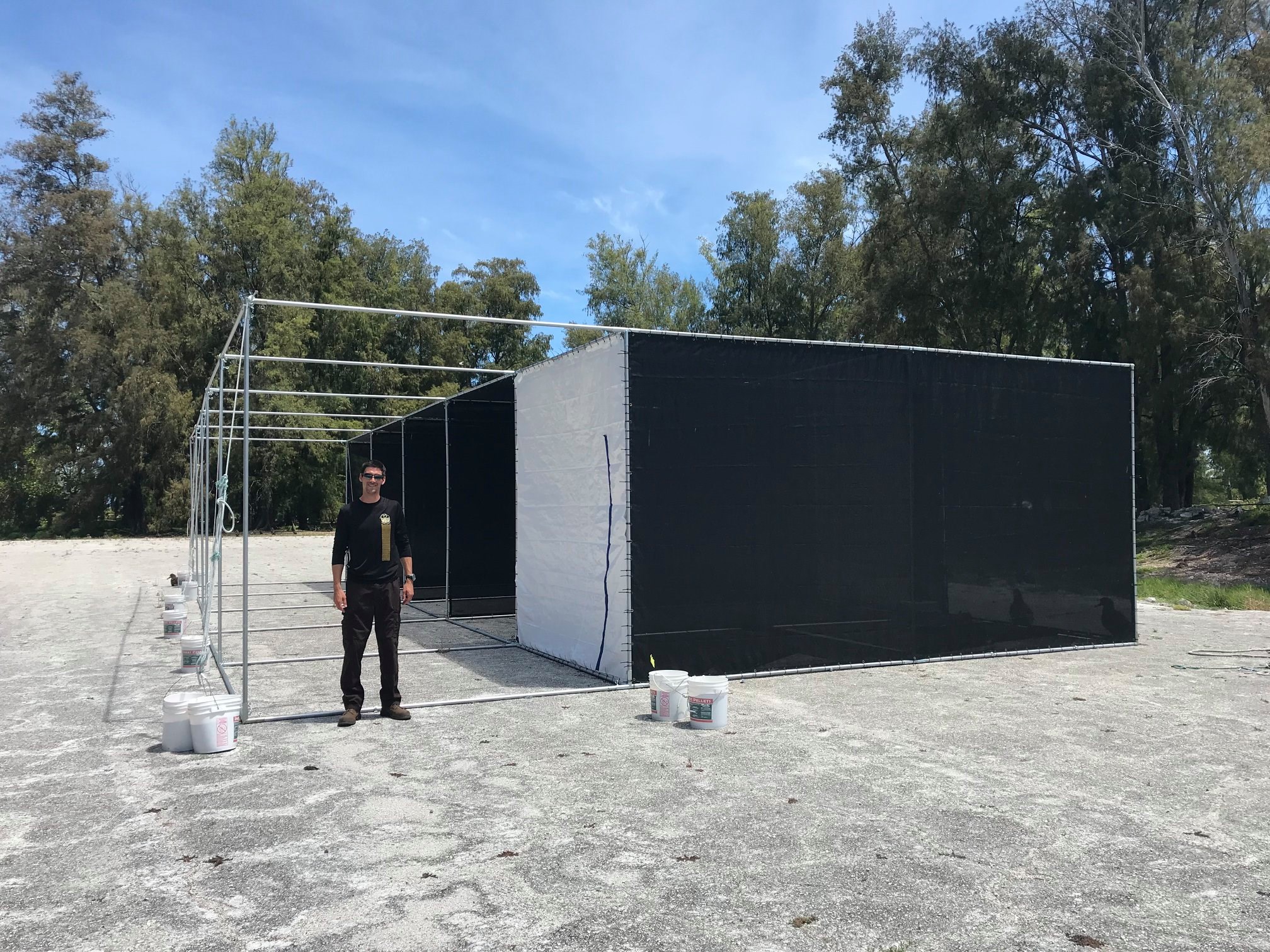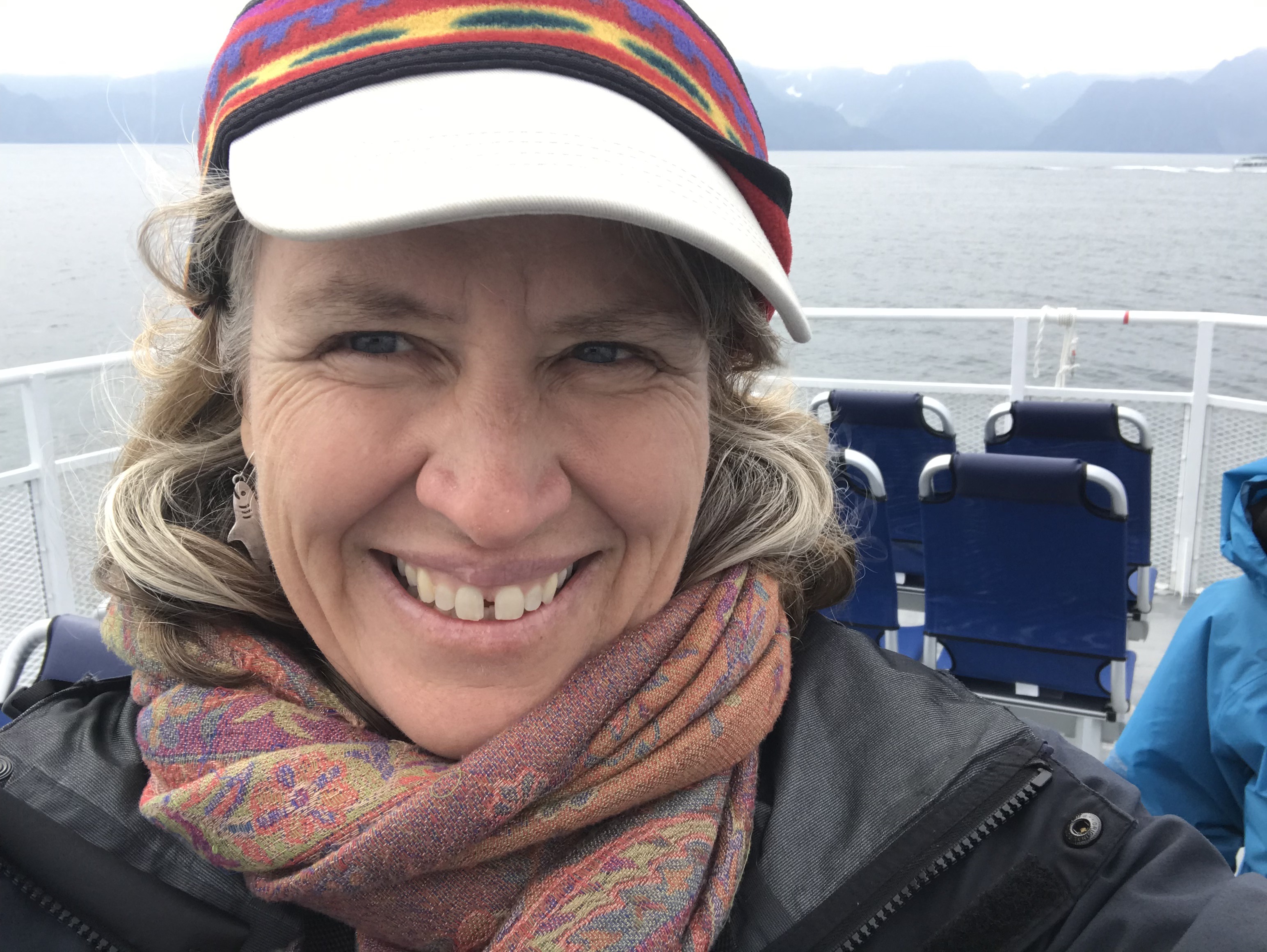Jaimie Cleeland was awarded a PhD last year by the University of Tasmania for her study of four species of ACAP-listed albatrosses (Black-browed Thalassarche melanophris, Grey-headed T. chrystostoma, Light-mantled Phoebetria palpebrata and Wandering Diomedea exulans) that breed on Australia's sub-Antarctic Macquarie Island.
The abstract of her thesis follows:
“Understanding the ecological relationships between a species and the environment it inhabits is critical to determining species resilience to environmental change and future population viability. By assessing ecological relationships across multiple species greater insights into species intrinsic adaptations and external environmental factors can be revealed, contributing to a broader understanding of community ecology.
This thesis examines the foraging behaviours and environmental drivers of demographic variability of four albatross species from subantarctic Macquarie Island (black-browed Thalassarche melanophris, grey-headed T. chrystostoma, light-mantled Phoebetria palpebrata and wandering albatrosses Diomedea exulans) to understand the ecological, morphological and life history relationships that influence species resilience to ecological shifts.
Three of the four albatross species that inhabit Macquarie Island exist in small populations of less than 80 breeding pairs (for light-mantled albatross the current breeding population estimate is approximately 2 150 pairs). Consistent monitoring since 1994 shows varied population trends among the species; black-browed and light-mantled albatrosses are increasing, while the grey-headed albatross population remains stable and the wandering albatross population is declining. The decline of Macquarie Island’s wandering albatrosses is attributed to long-line fishing operations, however for the remaining species, population and demographic drivers are unidentified. Aside from the threat to survival presented by fisheries, Macquarie Island albatrosses face climate-driven changes to physical oceanic processes including a southerly shift in frontal positions, intensifying wind patterns and greater variability in sea ice dynamics. For albatrosses, such changes are predicted to alter the structuring of prey resources and influence the energetic costs of foraging, ultimately compromising their capacity to survive and reproduce. At the colony, trends in the reproductive output of Macquarie Island albatrosses may be influenced by severe habitat degradation, including vegetation suppression and landslides, caused by the grazing of invasive rabbits.
Specifically, this thesis aims to: 1) identify important at-sea habitats and vulnerability to climate change in the Southern Ocean 2) understand the indirect impacts of onshore change caused by climate change and invasive species on albatross reproductive output 3) quantify the relative contribution of at-sea (climate change and fisheries) and onshore change (habitat degradation and weather) to demographic variability.
1) Habitat models of residence time from tracking data of all four species (n = 47, 1994-2009) were used to quantify the physical features associated with core foraging areas. During the breeding season, species overlap was high close to the island, extending north into the Tasman Sea. Conversely, nonbreeding albatrosses showed high variability in habitat use across wide ocean expanses but similarly used productive frontal regions and associated mesoscale eddies. Residence times were linked to moderate wind speeds for all species, suggesting that birds use areas where the aerodynamic performance will be greatest, reflecting morphological adaptations. Given the core foraging areas identified, and the functional and life history adaptations of each species, it is expected that of the four albatross species breeding on Macquarie Island, black-browed albatross may be more vulnerable to future climate-driven changes to wind patterns in the Southern Ocean and potential latitudinal shifts in the Subantarctic Front;
2) To quantify the influence of invasive European rabbits Oryctolagus cuniculus and extreme weather patterns on the reproductive output of three escarpment nesting albatross species (black-browed, grey-headed, and light-mantled albatrosses) demographic multi-event models were applied to 20 years of mark-recapture data.
High rabbit densities corresponded to reduced breeding propensity of all species, with severe declines observed during periods of highest rabbit numbers. For one species; the black-browed albatross, the combination of extreme rainfall and high rabbit density significantly explained reduced breeding success. These results show the cascading and compounding effects of a successful mammalian invader and extreme weather events on the reproductive output of a community of albatross species, offering compelling support for active management of island ecosystems;
3) The temporal variability in survival, breeding propensity and success was assessed using 20 years of mark-recapture data from four species of Macquarie Island albatrosses. For three species (excluding wandering albatrosses), the influence of oceanic, fisheries and onshore change were investigated using multi-event models to give insight into future population viability. Large-scale climate cycles; the Southern Annular Mode and the El Niño/Southern Oscillation explained significant variability in the survival of all species. For black-browed albatrosses, south-west Atlantic longline and New Zealand trawl fisheries effort described variability in survival. These findings suggest that managing drivers of negative demographic trends that may be more easily controlled, such as fisheries and habitat degradation, will be a viable option for some species (e.g. black-browed albatrosses) but less effective for others (e.g. light-mantled albatrosses), as opposed to drivers which are not easily mitigated, such as climate change. These findings illustrate the importance of integrating oceanic, fisheries and onshore threatening processes when assessing demographic variability and the development of management policy;
The results of this study suggest that managing sources of negative demographic trends that are more easily controlled, such as fisheries and habitat degradation, as opposed to those which are not; such as climate change, may be a viable option for some species (e.g. blackbrowed albatross) and less effective for others (e.g. light-mantled albatross). Subsequently, this study provides support for evidence-based conservation planning for these populations as well reduces outcome uncertainty of future management actions for other marine predator populations. Furthermore, this study has provided new insights into the ecology of a community of Southern Ocean predators and has broader applications for understanding the responses of multiple sympatric species to multiple environmental stressors.”
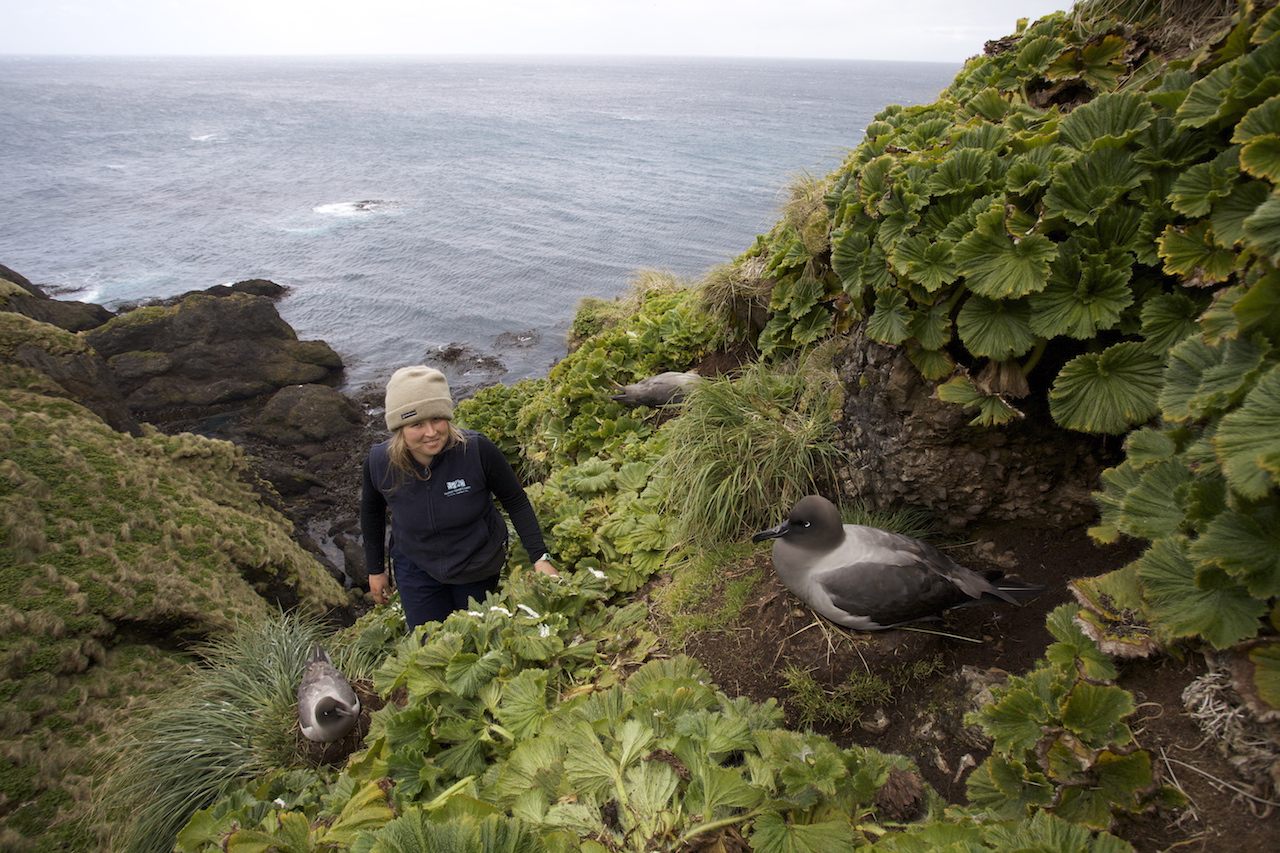
Jaimie Cleeland with Light-mantled Albatrosses on Macquarie Island
Click here for details of a publication co-authored by Jaimie Cleeland from her PhD research.
With thanks to Jaimie Cleeland.
Reference:
Cleeland, J. 2017. Factors that drive demographic change in a community of albatrosses. PhD thesis. Hobart: University of Tasmania. 153 pp.
John Cooper, ACAP Information Officer, 10 October 2019
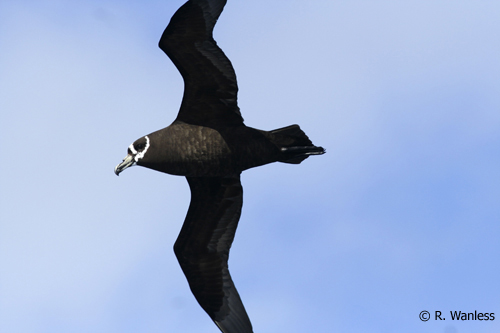

 English
English  Français
Français  Español
Español 